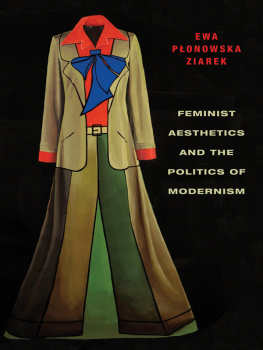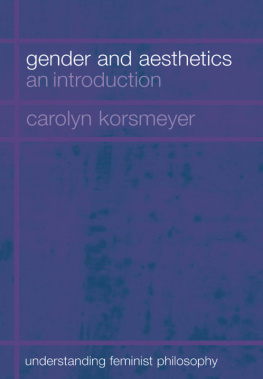DOING AESTHETICS WITH ARENDT
COLUMBIA THEMES IN PHILOSOPHY, SOCIAL CRITICISM, AND THE ARTS
COLUMBIA THEMES IN PHILOSOPHY, SOCIAL CRITICISM, AND THE ARTS
LYDIA GOEHR AND GREGG M. HOROWITZ, EDITORS
Advisory Board
Carolyn Abbate
J. M. Bernstein
Eve Blau
T. J. Clark
Arthur C. Danto
John Hyman
Michael Kelly
Paul Kottman
Columbia Themes in Philosophy, Social Criticism, and the Arts presents monographs, essay collections, and short books on philosophy and aesthetic theory. It aims to publish books that show the ability of the arts to stimulate critical reflection on modern and contemporary social, political, and cultural life. Art is not now, if it ever was, a realm of human activity independent of the complex realities of social organization and change, political authority and antagonism, cultural domination and resistance. The possibilities of critical thought embedded in the arts are most fruitfully expressed when addressed to readers across the various fields of social and humanistic inquiry. The idea of philosophy in the series title ought to be understood, therefore, to embrace forms of discussion that begin where mere academic expertise exhausts itself; where the rules of social, political, and cultural practice are both affirmed and challenged; and where new thinking takes place. The series does not privilege any particular art, nor does it ask for the arts to be mutually isolated. The series encourages writing from the many fields of thoughtful and critical inquiry.
For the list of titles in this series see .
DOING AESTHETICS WITH ARENDT
HOW TO SEE THINGS
CECILIA SJHOLM
COLUMBIA UNIVERSITY PRESS NEW YORK
Columbia University Press
Publishers Since 1893
New York Chichester, West Sussex
cup.columbia.edu
Copyright 2015 Columbia University Press
All rights reserved
E-ISBN 978-0-231-53990-6
Library of Congress Cataloging-in-Publication Data
Sjholm, Cecilia.
Doing aesthetics with Arendt: how to see things / Cecilia Sjoholm.
pages cm.(Columbia themes in philosophy, social criticism, and the arts)
Includes bibliographical references and index.
ISBN 978-0-231-17308-7 (cloth : acid-free paper)ISBN 978-0-231-53990-6 (e-book)
1. Arendt, Hannah, 19061975. 2. Aesthetics. 3. ArtPhilosophy. I. Title.
B945.A694S56 2015
111.85092dc23
2015001341
A Columbia University Press E-book.
CUP would be pleased to hear about your reading experience with this e-book at .
Cover and book design: Lisa Hamm
Cover image: 1969. AP Photo
References to websites (URLs) were accurate at the time of writing. Neither the author nor Columbia University Press is responsible for URLs that may have expired or changed since the manuscript was prepared.
FOR MRTEN, HOA, AND THU
CONTENTS
THINGS CAN be seen in a number of ways. Things, not only things in the material sense of objects but also thingsthat is, problems, concepts, and phenomenacan be scrutinized from a variety of positions and perspectives. The title of this book refers to an aesthetics after Hannah Arendt. She never wrote on aesthetics. But she engaged in problems of art and aesthetic theoryreflecting on sensibility, judgment, and works of art in a manner that is both radical and consistent.
The purpose of Doing Aesthetics with Arendt: How to See Things is double: first, to trace a coherent line in Arendts considerations of art and aesthetics in and through the scattered remarks on aesthetic experience and works of art in her published works, notes, and letters, and second, to make her thoughts relevant for us today. This includes a reflection on how her aesthetics may inform and alter our attitude toward philosophical questioning, for instance, on the political, agency, freedom, the law, prejudice, and so on. Together, these purposes form an overall question: If Arendt had produced an aesthetic theory, what would it have looked like? The question is inspired by Arendt herself. She knew well that Kants Critique of Judgment was not a book on politics, yet she decided to read it as Kants unfinished politics. I have made use of that gesture. I know well that Arendts reading of Kant was not an aesthetics. Yet I have decided to read it as an unfinished aesthetic theory. Such a reading may appear idiosyncratic. But it follows suggestions present in Arendts own work.
However, Arendts interest in the senses and aesthetic sensibility is underresearched, not least with regard to their prepolitical implications; her political ontology rests on a notion of plurality that cannot be conceived in the abstract. The political is seen, heard, felt, and apprehended through a sensible form of being, producing judgment and imagination as functions of sensibility. Aesthetic sensibility, therefore, underlies all forms of political reflection, producing possibilities as well as constraints. The role of the work of art for Arendts ideas has also been neglected, although it may contribute not only to Arendt scholarship but also to theories of art in general and to political philosophy. These are the main contributions to what we may construe as an Arendtian aesthetics.
Where, one might ask, is the work of art in her writings? Disregarding a few paragraphs on Homo faber in The Human Condition, all in all there is very little description of visual objects in Arendts work. Questions of aesthetics, however, cannot be reduced to art. We experience aesthetic phenomena in our everyday lives, in nature, in the sciences, and so on. Following Kant, we may talk about all those phenomena that appeal to our judgment as belonging to the field of aesthetic inquiry. Judgment intrinsically belongs to the field of aesthetics. We experience aesthetic phenomena as beautiful, ugly, pleasurable, or sublime. It is certain that works of art offer good examples of how to frame aesthetic inquiries.
Arendt was an avid reader, and she discusses literature with great enthusiasm. She mentions other forms of art less often. It would appear, then, as if she has nothing to say about visual art, cinema, or music. As one reads her reflections on art and aesthetics, however, it becomes clear that, for her, any kind of categorization of forms of art and any kind of specificity that one may want to give to various forms of aesthetic experience are less interesting than their common features. Arendts aesthetics has wider significance than an exploration of works of a certain medium. She is concerned with the way in which aesthetics teaches us how to see thingsnot in terms of holding an opinion but rather in terms of how we become concerned and engaged with the world.
We have become so used to considering Arendt as a political thinker that we have forgotten the aesthetic aspects of her philosophy. We also have become so used to reading her lectures on Kant through a political lens that we have forgotten their aesthetic implications. Going through her notebooks, however, we find reflections on aesthetics and sensibility that were never fully elaborated in her published work. There is an aesthetics hidden in Arendts writings. It can be seen in conjunction with the phenomenology of thought in





















